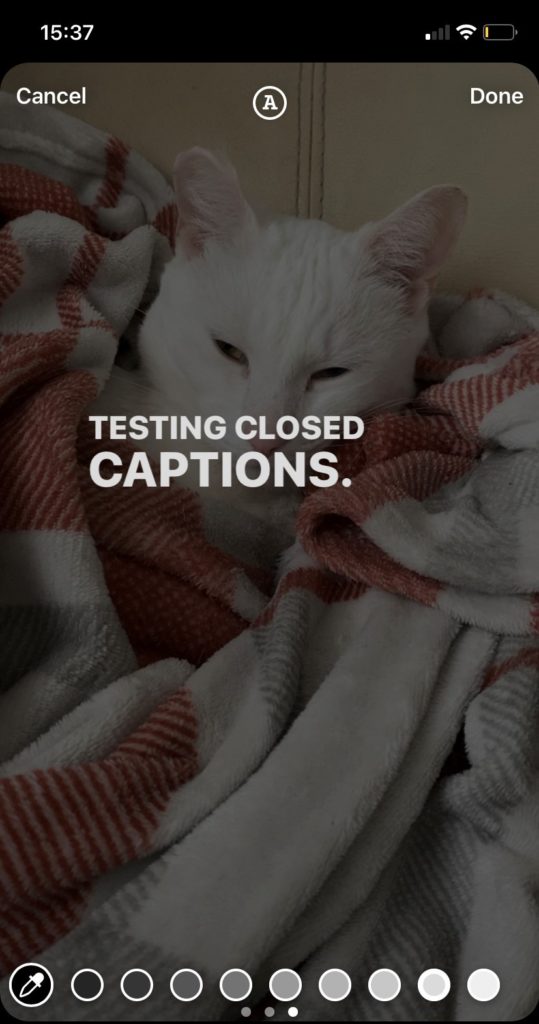
What is online accessibility and why is it important?
Online accessibility is the practice of making content available to as many people as possible. This means enabling those with disabilities to access content as effectively as those without disabilities.
With an estimated 53 million active social media users in the UK, we tend to take online access for granted. However, at least 1 in 5 people in the UK have a long-term illness, impairment or disability, and many more struggle with temporary disabilities that impact their online experience.
As of 23rd September 2018, accessibility regulations came into force for public sector bodies. However, just because it is mandatory for public bodies doesn’t mean we should not make it a normal part of our online activities. So, how can we start making our social media content more accessible?
Top Tips for Making your Social Media Content More Accessible.
Capitalise your hashtags.
Hashtags written entirely in lower or upper case are difficult to understand. Plus, screen readers will read hashtags as one word if individual words are not differentiated. Capitalise each word in your hashtags. For example, try writing #EdgeHillUniversity instead of #edgehilluniversity.
Add alt text to images.
Alt text describes the appearance and function of an image. This allows screen readers to identify and describe images, giving those with visual impairments, sensory processing difficulties and/or learning disabilities greater access to content. While sites may include image recognition technology that automatically generate alt text, the descriptions they produce are not always accurate. Therefore, it is worth taking the time edit auto generated alt text or to add alt text manually to ensure it is accurate and easy to understand. Keep it concise; 125 words max is a good limit to stick to. Most sites including Facebook, Instagram and Twitter provide options for adding alt text.
Be mindful when it comes to gifs.
Gifs are a fun way to express your feelings, but if they contain flashing content, they can induce seizures in those with photosensitive epilepsy. Avoid gifs containing flickers, flashes and/or blinks. Choose gifs with a pause option, or gifs that are set to stop after 5 seconds. And remember to add alt text that describes the gif’s content.
Provide captions for videos.
Captions are text versions of a video’s audio content. Captions are synchronised with the video’s content and enable those with impaired hearing to interact with videos. Facebook, Instagram, Twitter and Tik Tok allow you to add auto generated captions to your video posts, stories and reels. Another way to increase accessibility is by providing a transcript or description of your video within your post caption.
You can download apps such as AutoCap and Voicella that enable you to add video captions manually. This is a good idea if you are using a feature that doesn’t enable editable auto captions.

Limit your emoji use.
Emojis may look cute, but they aren’t always compatible with accessibility software. Text to speech and screenreaders typically generate descriptions for each emoji you use. For example, if you add five heart emojis in succession, this will be read as: “Heart heart heart heart heart”. So, try to avoid overdoing it. 2-3 emojis per post is good limit to stick to.

Avoid small fonts and custom fonts.
Customising with fun fonts and bold, italicised and/or underlined text may be a good way to make your online content stand out, but it’s not the easiest to read.Avoid ‘serif’ fonts, which are ornate fonts such as Garamond, Baskerville, Georgia and Courier New. It is best to stick to standard, ‘non serif’ fonts, such as Ariel, Calibri, Century Gothic, Helvetica and Verdana. You should also avoid using small font, which is tricky to read. For example, don’t cram a lot of tiny text into an Instagram story – simplify your message, or spread your text across a few posts to ensure readability.
Pay attention to colour contrast.
For most people, low colour contrast makes content difficult to understand, but it is especially difficult for those with visual impairments. Make sure there is sufficient contrast between foreground and background colours; for example, avoid using a pale font on a light background or deep font on dark background. You should also avoid colour combinations that make things indistinguishable to those who are colour-blind, such as green/red, blue/yellow and purple/dark blue. A common, colour-blind friendly combination is blue/orange.
Try familiarising yourself with accessible colour combinations with this handy Coloring for Colorblindness guide. You can also check out WebAim contrast checker.
Keep on top of new accessibility features.
Now that you know some of the basics, you’re ready to start making your social media content accessible. But don’t just rely on these pointers. Expand your understanding of accessibility and stay alert to any new features rolled out by the platforms you use.
For more information on digital accessibility, you can visit the UK Government guidance on accessible communications. If you would like to learn about writing with accessibility, please visit our Build Accessible student support guide.
By Laura Glancy (Student Intern)

